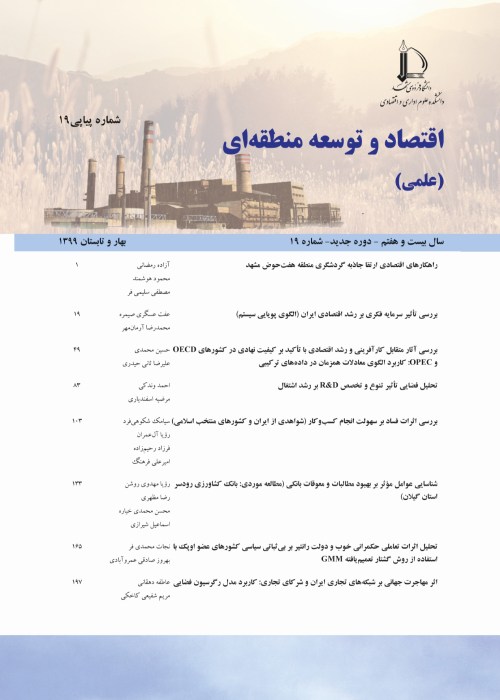Regional Differences in The Primate City Changes of Iran: 1976-2016
In the urban economics literature - which does not have much history in Iran - it has been shown that the performance of cities depends on their structure. In other words, there is a significant relationship between the performance of the city and its structure. Accordingly, despite such a relationship, the future performance of cities can be predicted based on their structural changes. Therefore, this study is designed to investigate the trend of structural changes in Iranian cities as well as the regional differences of the urban system and based on the first urban position.
THEORETICAL FRAMEWORK:
Although there have been many studies examining primary urban indicators in each region, based on the research conducted in this study, a study examining primary urban indicators by city in all provinces of Iran for the period leading up to the 2016 census, have not been observed. This makes this study different from other studies in this field. Thus, this paper is innovative in comparison to previous studies in two respects. First, it used the nine primate city indicators individually to realize the primary cities of all cities in the country, as well as all cities in each province in the country, and compared them among them. In addition, the rank-size rule has been used to measure the balance or imbalance in population distribution. However, in previous studies, primary cities have been calculated only for cities across the country or in specific regions, and only a few of these indicators have been used, with no comparison between them. Second, the survey period in this study covers the year 2016, based on the most recent information available in the field. However, primate city surveys of cities across the country (to the knowledge of the researchers in this study) have not been conducted until the last census period.
This study is designed to investigate the trend of structural changes in Iranian cities as well as the regional differences of the urban system and based on the first urban position. To achieve this goal, this paper have been used nine Primate City indexes Including primate city Index, Two City Index, Ginsberg Index, Mehta's Four City Index, Moomaw & Alwosabi Index, Herfindahl Concentration Index, Herfindahl Deconcentration Index, Entropy Index and Mousavi urban domination. The data of this study are extracted from the census in Iran of 1976 to 2016.
The results show that the primate city phenomenon in the urban system of Iran has existed throughout this period. Also, the primate city indicators in these years show the move towards more balance in the urban system of the country. However, the primate city rate has decreased during the studied years and the decreasing trend in the studied indicators is consistent with each other. However, according to the available evidence, the results show the creation of prime cities in the Iranian urban system instead of a prime city. Also, based on the results of this study, the majority of the studied indicators up to 2006 show that the highest and lowest urban prime rates were in Tehran and Mazandaran provinces. Qom province has the highest urban prime in the urban system of Iran since 2006. Accordingly, it can be expected that the change in the structure of Iran's urban system will provide the way for future functional changes in them.
CONCLUSIONS & SUGGESTIONS:
The status of primate cities in different regions is influenced by situational characteristics and urban location. The study of regional primate cities during the study period, using Mehta's Four City Index, showed that border regions and regions close to border points have shifted from a predominant primate city status to a desirable or minimal status. This is because the flow of domestic goods and services moves from larger centers to smaller centers, and as this flow passes through different regions to reach the center, its impact is felt in intermediate regions, causing the primate city phenomenon in some domestic states (especially those close to other regions from the center of domestic goods and services).
- حق عضویت دریافتی صرف حمایت از نشریات عضو و نگهداری، تکمیل و توسعه مگیران میشود.
- پرداخت حق اشتراک و دانلود مقالات اجازه بازنشر آن در سایر رسانههای چاپی و دیجیتال را به کاربر نمیدهد.



